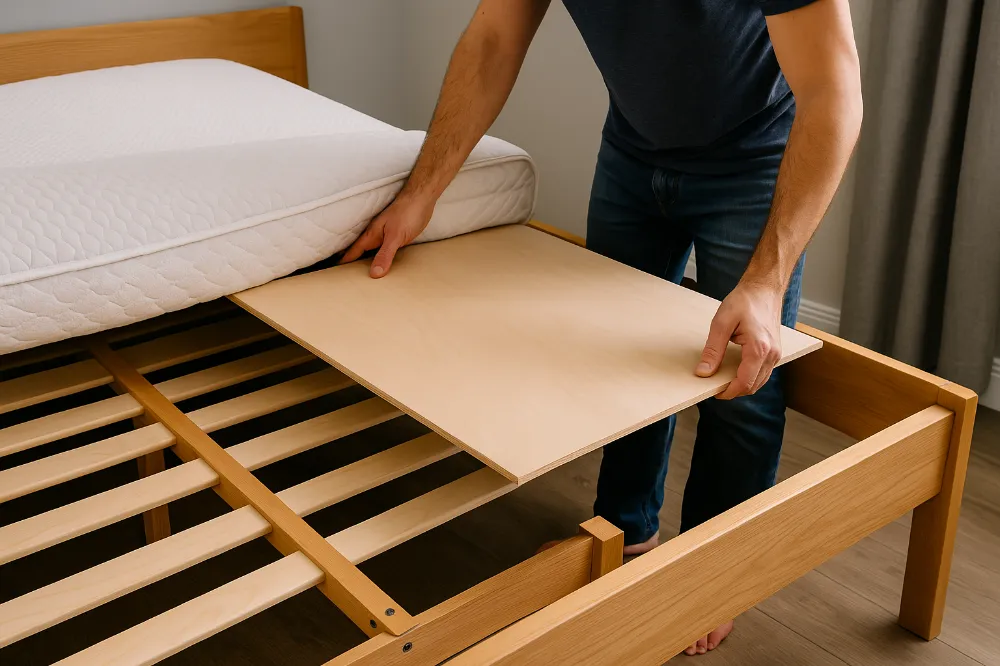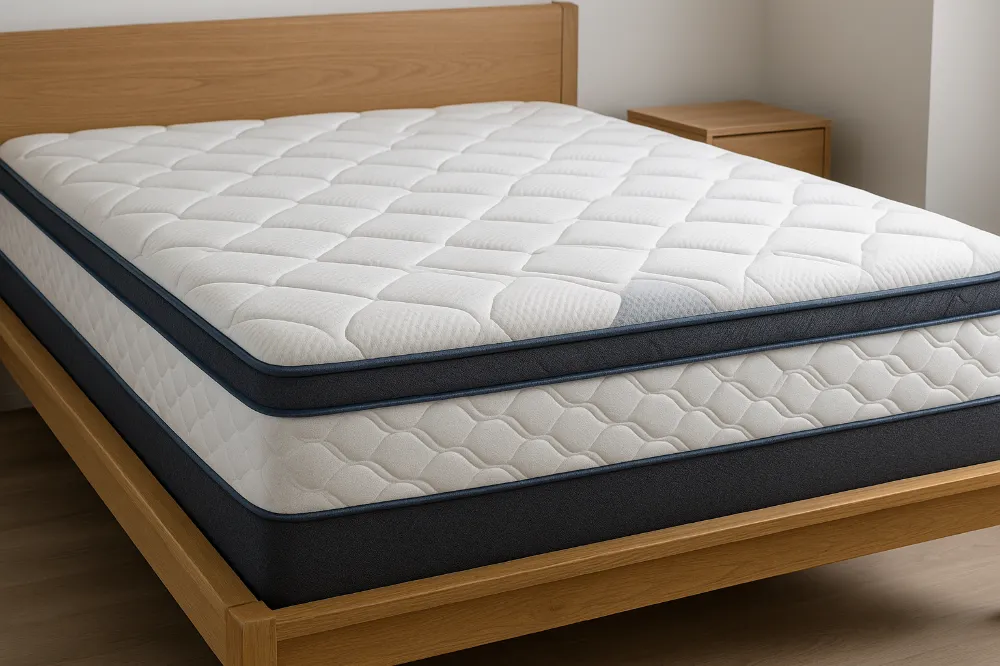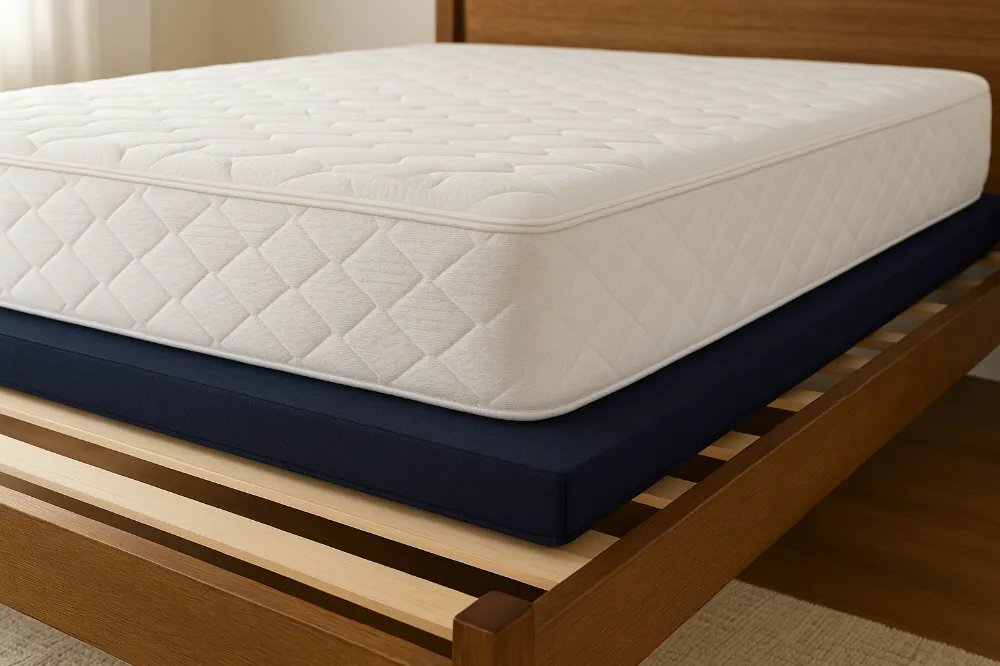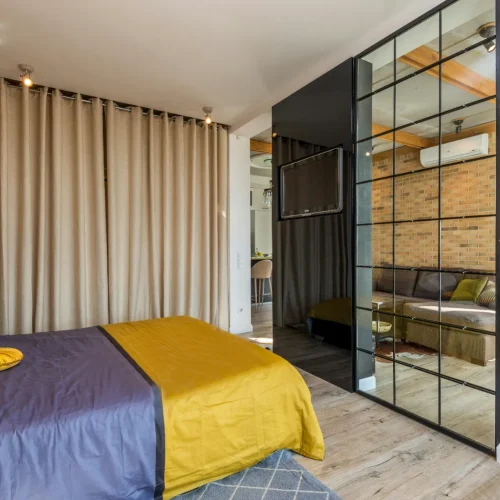
When you think about sleep quality, the first thing that usually comes to mind is the mattress itself its firmness, its materials, its age, or whether it feels soft enough at night and supportive enough in the morning. But one factor often gets overlooked: the foundation underneath. Even the most luxurious mattress can feel uncomfortable or start to sag if the base beneath it isn’t doing its job.
If your bed feels uneven, sinks in the middle, or just doesn’t feel as supportive as it used to, enhancing the support system at home can make a dramatic difference. Small upgrades like reinforcing the frame, using the right supportive layers, or improving weight distribution can turn a mediocre sleeping surface into a wonderfully stable one. And what’s great is that you don’t need special tools, expensive materials, or a brand-new bed to improve mattress support. With a little attention to the foundation, structure, and maintenance of your bed, you can elevate your sleeping experience and extend the life of your mattress.
Understanding the Importance of Solid Mattress Support
Before diving into the different ways to enhance support, it helps to know why support matters so much. Proper mattress support isn’t just about comfort it’s about spinal alignment, even weight distribution, and overall sleep health.
When a mattress doesn’t have enough support, your spine may curve unnaturally during sleep. This can create lingering pressure in your back, hips, or shoulders. Over time, this leads to sleep disruption, morning stiffness, and an overall decline in mattress durability. The U.S. National Institutes of Health (NIH) emphasizes the importance of quality sleep and proper physical support as part of maintaining long-term health and neurological balance. A strong foundation also prevents premature sagging, reduces uneven pressure points, and keeps your mattress feeling like it did when you first bought it.
The Role Bed Slats Play in Mattress Support
If your mattress rests on slats, they play a huge role in how supportive your bed feels. Many homeowners discover that their slats are too widely spaced or too thin to support a modern memory foam or hybrid mattress. Ideally, slats should be 2–3 inches apart. Wider gaps allow heavier mattress types to sink between slats, creating dips or soft spots. If you touch the surface of your mattress and feel the slats through the fabric, that’s a clear sign the base isn’t doing its job. Thicker, sturdier slats made from hardwood or reinforced lumber create a better support system. Adding more slats or upgrading the wood helps distribute weight evenly. And if the slats wiggle, shift, or creak, securing them with hardware or Velcro strips can keep everything stable and noise-free.
How Bunkie Boards Improve Stability and Firmness

A bunkie board can dramatically improve mattress support without any major changes to your bed. Essentially, it creates a smooth, solid surface between the mattress and its base. This is especially useful for foam mattresses, which need firm, uniform support. You can find bunkie boards made from wood, metal-reinforced panels, or upholstered boards that also reduce friction. What they all do is eliminate sagging, smooth out uneven slat spacing, and instantly boost firmness. They’re also a great solution for renters or for anyone who wants to upgrade support without replacing the entire frame or foundation.
Adding Support Pads or Firm Boards for Quick Fixes
Support pads and boards are a subtle but effective solution for soft or sagging areas. They’re lightweight, easy to slide under the mattress, and designed to restore the flat, firm feel your bed originally had. If you’ve noticed a specific area of your mattress dipping often the center placing a support pad underneath that section can give it new life. It’s perfect for temporary improvements, but many people find that support pads give their mattress a surprisingly long-lasting boost.
When a Box Spring Becomes Part of the Problem
Box springs age just like mattresses. The springs weaken, the frame warps, or the fabric sags. If you press down on your box spring and feel significant give, that softness may be transferring straight to your mattress. Sometimes the solution is as simple as inserting a sturdy plywood sheet inside the box spring to create a firmer, flatter base. Other times, replacing the box spring is ultimately the best route especially if it’s older than eight to ten years.
Why Upgrading Your Foundation Can Transform Your Sleep
Modern mattresses often require modern foundations. Foam and hybrid mattresses in particular benefit from bases designed with closely spaced slats or solid platforms. If your mattress feels supportive on the floor but not on your bed frame, the foundation is likely the culprit. A strong platform foundation, metal grid frame, or reinforced wooden base can give your mattress the lift and stability it needs. These designs keep the surface level, eliminate sagging, and help maintain proper spinal alignment throughout the night.
The Importance of Center Support—Especially for Bigger Beds
If you have a queen, king, or California king bed, center support is essential. Without a center beam or adjustable legs touching the floor, the entire frame can slowly bow downward due to weight.
Adding a center support system strengthens the frame from the inside out. It stabilizes slats, reduces mid-bed sagging, and ensures that long-term weight pressure doesn’t deform the frame.
Rotating and Flipping Your Mattress for Longer Life
Even with excellent support underneath, mattresses need rotation. Rotating spreads wear evenly across the entire surface so one side doesn’t develop deep impressions.
Most modern mattresses only require a rotation (180 degrees), while two-sided mattresses can be flipped as well. Making this part of your quarterly routine helps maintain consistency in support and comfort.
Using Mattress Toppers to Restore Firmness
Toppers aren’t just for making a bed softer they can make it more supportive, too. A high-density foam topper or latex topper adds structure, lifts soft spots, and offers better spinal alignment. Latex toppers are especially great for sleepers who want firm, buoyant support without losing comfort.
Fixing the Bed Frame Before It Causes Damage
Even the strongest mattress can feel off if the bed frame is unstable. Loose screws, shifting joints, and wobbly legs can all affect the support beneath your mattress.
Taking the time to reinforce the frame tightening hardware, adding brackets, or stabilizing legs can help maintain structure and prevent long-term sagging. A solid frame is truly the backbone of your mattress.
Keeping the Mattress From Sliding
When a mattress slides, it can’t distribute your weight evenly. Even a slight shift can lead to nighttime discomfort or uneven mattress performance. Anti-slip pads, rubber mats, or Velcro strips help keep everything aligned and secure. Foam mattresses, especially, benefit from this small upgrade.
How to Manage Mattress Indentations Naturally

If your mattress is beginning to sag in certain areas, all hope isn’t lost. You can correct small dips by placing rolled towels or foam inserts beneath the mattress to push up soft zones. Support boards and toppers also help restore a balanced feel. These fixes aren’t permanent but can provide welcome relief while you budget for future upgrades.
Understanding the Weight Distribution on Your Bed
Plopping on the same edge of the bed every day compresses the mattress faster in that area. Overloading the bed with storage bins, piles of clothes, or pets who constantly climb under the frame can also cause structural stress. Being mindful of how weight is applied helps prolong your mattress’s lifespan and keeps support even.
Why Cleanliness Affects Mattress Support
Dust, moisture, and dirt gradually break down mattress materials. Foam becomes softer, fabrics weaken, and the internal components deteriorate. Keeping your mattress clean—vacuuming it occasionally, air-drying it, and using a breathable cover—extends its firmness and performance over time.
Choosing a Well-Constructed Mattress When It’s Time for a Replacement
Sometimes the solution truly is a new mattress especially if yours is past the ten-year mark or has deep, permanent impressions. High-density memory foam, latex, and hybrid mattresses with zoned support often provide superior long-term support.
If you’re curious about the science behind sleep, the Sleep entry on Wikipedia gives a broad look at how sleep cycles and body positioning play a role in quality rest . Understanding these basics really reinforces how much a supportive setup affects your nightly comfort.
Raising the Bed Height for Easier Movement
A bed that sits too low forces you to strain your back or press heavily on the mattress edges every time you get in or out. Using bed risers or a taller foundation can improve ergonomics and reduce unnecessary stress on the mattress’s perimeter.
Protecting Your Bed from Pets and Under-Bed Disruptions
Pets sometimes bump slats, push at support legs, or scratch at fabric when they crawl under beds. Blocking the bottom of the bed with storage boxes or barriers helps prevent accidental damage.
Storing Mattresses Properly to Preserve Support
If your mattress is rarely used like in a guest room proper storage matters. Laying it flat, keeping it dry, and covering it with breathable fabric prevents warping, bending, and moisture damage.
Final Thoughts: The Foundation of Better Sleep Starts With Better Support
Improving mattress support at home doesn’t require a huge budget, a new frame, or a brand-new mattress. With a few thoughtful adjustments strengthening slats, using a bunkie board, upgrading the foundation, rotating the mattress, or adding a supportive topper you can radically improve how your bed feels and performs.
Sleep is such an essential part of daily life, and the right support system can make every night more restorative. Whether you’re looking to reduce back pain, eliminate sagging, or simply create a more stable sleep surface, enhancing your mattress support at home is one of the smartest comfort upgrades you can make.
FAQs
If your mattress sags, dips in the middle, feels uneven, or causes back pain, it likely needs better support from the foundation or frame.
Yes. A bunkie board creates a solid, even surface that boosts firmness and prevents sagging, especially under foam and hybrid mattresses.
Most memory foam and hybrid mattresses need slats spaced no more than 2–3 inches apart to prevent sinking between gaps.
Supportive toppers, like high-density foam or latex, can improve firmness, correct minor sagging, and enhance spinal alignment.
Yes. Over time, box springs weaken and lose their structure. If they sag or feel too soft, they can cause the mattress to dip.
Yes, placing a smooth plywood sheet between the mattress and slats or box spring can improve support, but ensure it’s clean and dry.
Most modern mattresses should be rotated every 3–6 months to prevent body impressions and extend their lifespan.
Absolutely. Tightening bolts, adding center support legs, and reinforcing slats significantly improves overall mattress stability.
Yes. Poor support can cause misalignment and pressure on the spine, leading to back pain and poor sleep quality.
If the mattress is still in good shape but feels unstable, upgrading the foundation is usually the more cost-effective fix.













